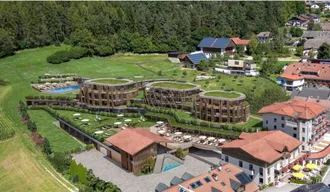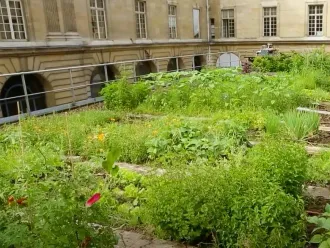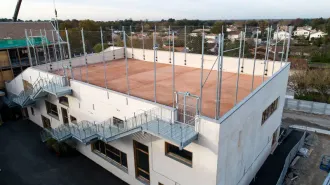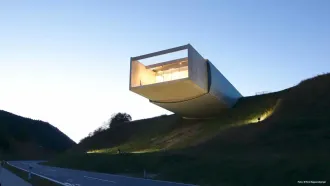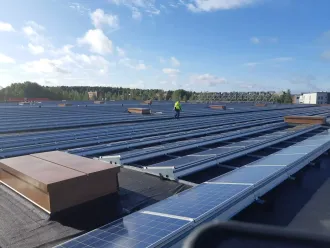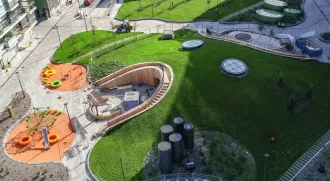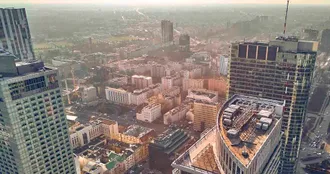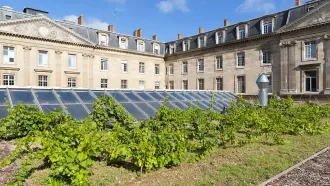Our country pages
Europe
Search
The Multi functional Roof

Functional decisions
Increasingly shrewd architectural and functional decisions mean that the roof of today is increasingly useful and versatile: it can be a terrace, perhaps in which to create a garden or vegetable patch, it can host solar panels for the production of clean energy, or it can be turned into a habitable attic.
What other aspects are considered? The roof must not only be "attractive" but also functional and durable. In order to properly evaluate the project, it is necessary to know:
- The impact of the local geographical and weather conditions (altitude, the amount of rainfall, ice, wind, snow, seismic activity and/or other specific local characteristics: salinity, humidity, pollution).
- The pitches required, which will determine the choice of materials and how the products are to be attached.
- The conditioning dictated by the layout (counter slopes, pitch intersections, etc.) and by the presence of critical points (discontinuities, chimney stacks, dormers, skylights, etc.)
- The reciprocal interference between the roof covering and the other layers of the roof, in order to reinforce its stability and its energy, acoustic and mechanical performance.
This is increasingly important both for the purposes of protecting the system and of contributing to the energy efficiency of the roof.
Jump to section
New possibilities for your roof
Today's roofs are a far cry from the classic gable roof that protects against the elements and quickly disposes of rainwater. It is very different from the cold attic space that separated the outside from the inhabited spaces below and which was used simply as a storeroom for old objects.
Increasingly shrewd architectural and functional decisions mean that the roof of today is increasingly useful and versatile.
What you can do with a roof
There is a wide range of possible solutions to choose from to make your roof functional:
- a green space that compensates for the natural land taken up by the construction of the building
- a city garden: a green recreational space which you can enjoy with your friends and family
- a botanical garden: beautiful, recreational, functional, educational
- a place that can be used to produce energy in order to improve the energy performance of the building and, consequently, the living comfort in both summer and winter, thanks to its complex stratigraphy.
The multi function roof: main functions of the roof covering
The roof covering has two key functions:
- to protect against the weather
- an aesthetic function, consistent with the entire formal structure of the building.
The roof is the part of the building that is most exposed to the sun, rain, snow, wind and hail. So the decisions made regarding its construction or renovation must result in a durable and functional solution.
Moreover, the roof significantly affects the aesthetic perception of a building and its surrounding context. For this reason, a good project must properly interpret the needs of the customer in functional, implementation and regulatory terms.
The initial approach, however, is of an aesthetic nature: the factors that most significantly influence the choice of roof are:
- Layout
- Form of the materials that make up the roof covering
- Colours and finishes
- Implementation practices
In practice, the choice is generally between two types
- Traditional roofs with classical designs: pitched roofs with slopes that vary depending on the climate and the characteristics of the geographical area, with forms defined by undulating tiles in different shades, defined over time based on the composition of the available raw materials.
- Contemporary roofs with lower pitches: continuous roofs, either green roofs or used as a terrace, or mono-pitch roofs with a low incline, finished with flat tiles, an essential and linear style, characterised by more modern colours or decidedly alternative systems (metal covers, synthetic membranes).
There are many options to choose from, ranging from conservative approaches such as making a harmonious addition to an existing building, up to more modern approaches which underline, reiterate and consolidate contemporary hallmarks to ensure recognition over time of their "state-of-the-art" credentials.
Within this range there are a myriad of choices to be made regarding the different forms, finishes, antiquations, aesthetics and materials required depending on which approach is taken.
